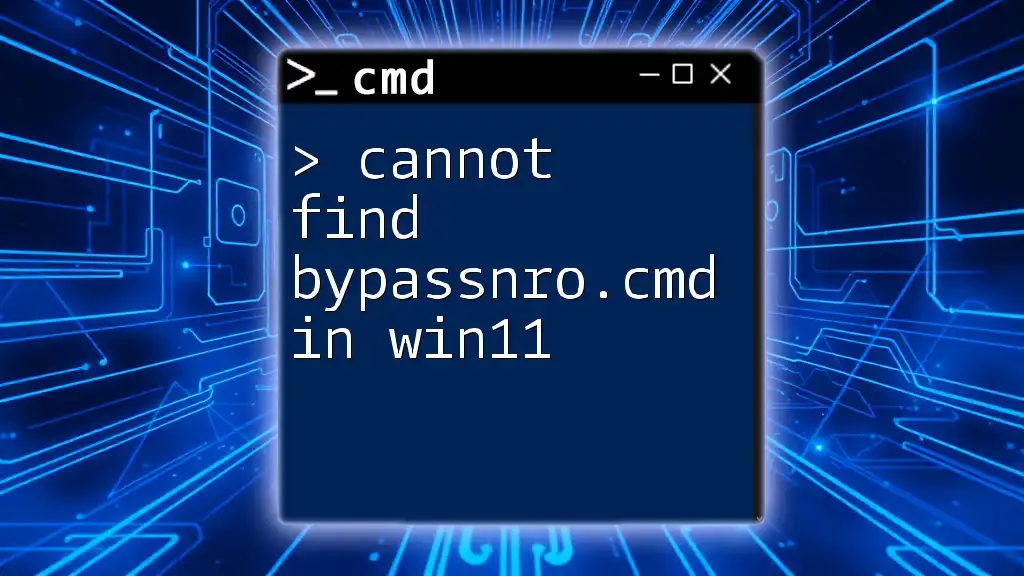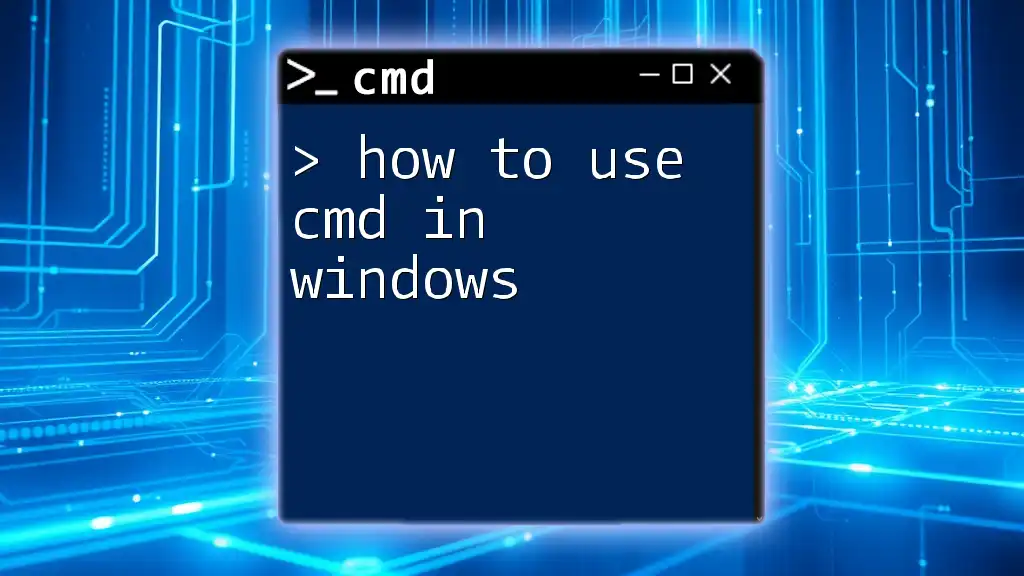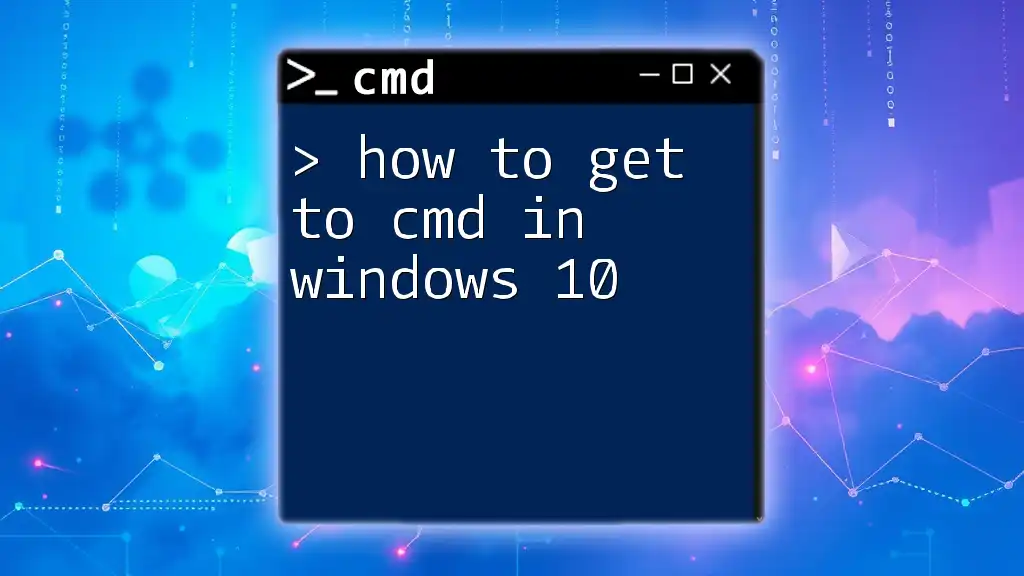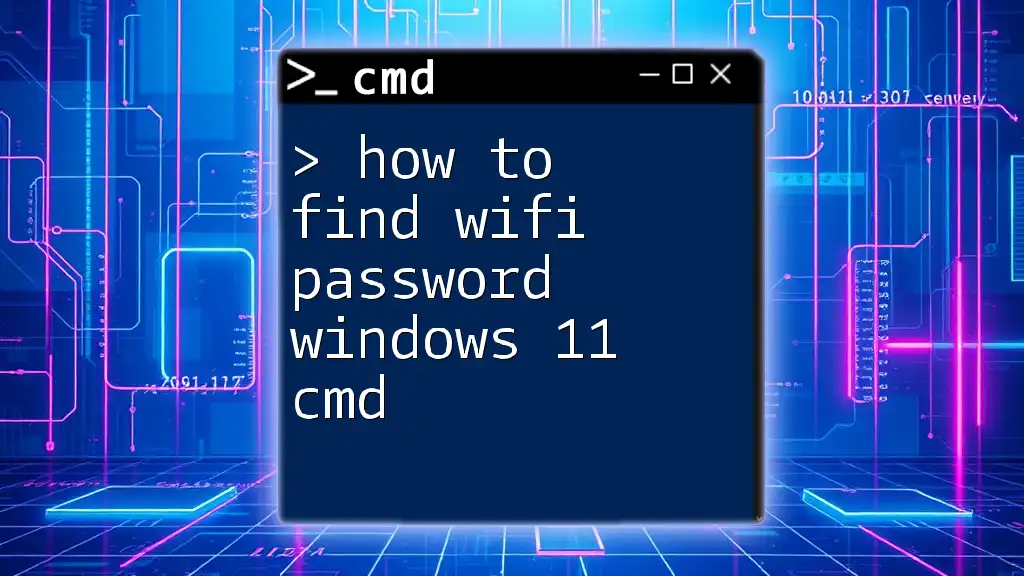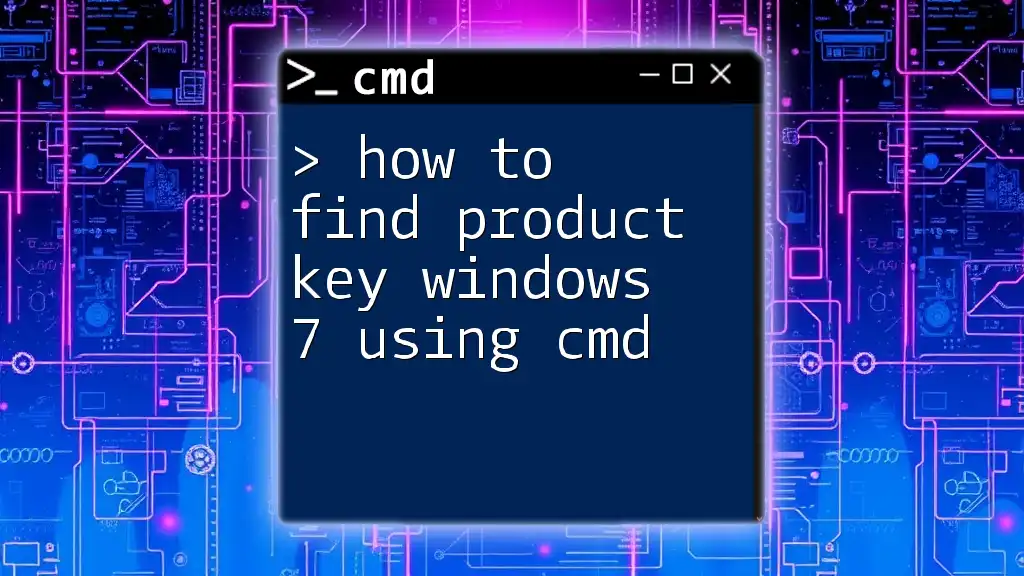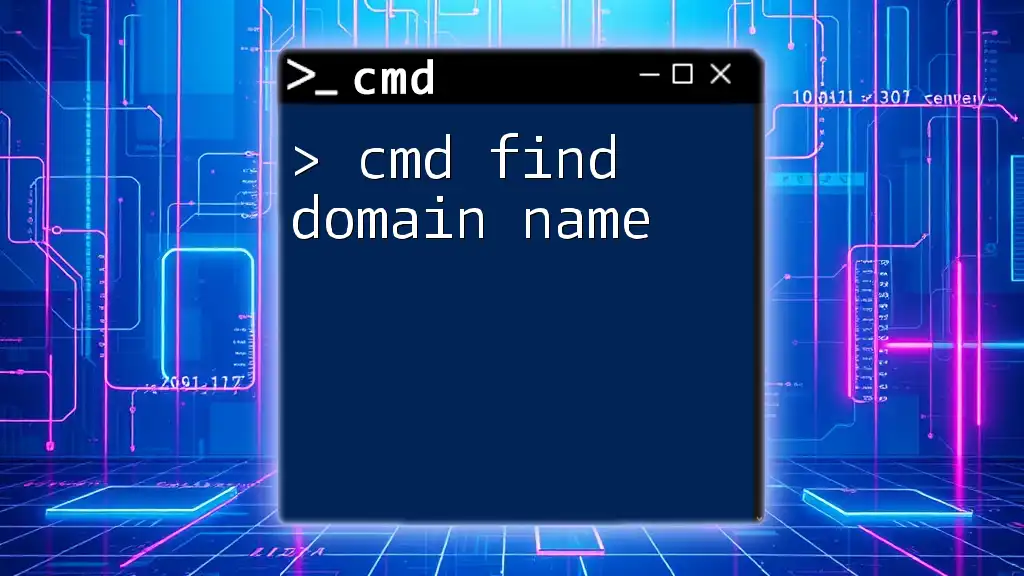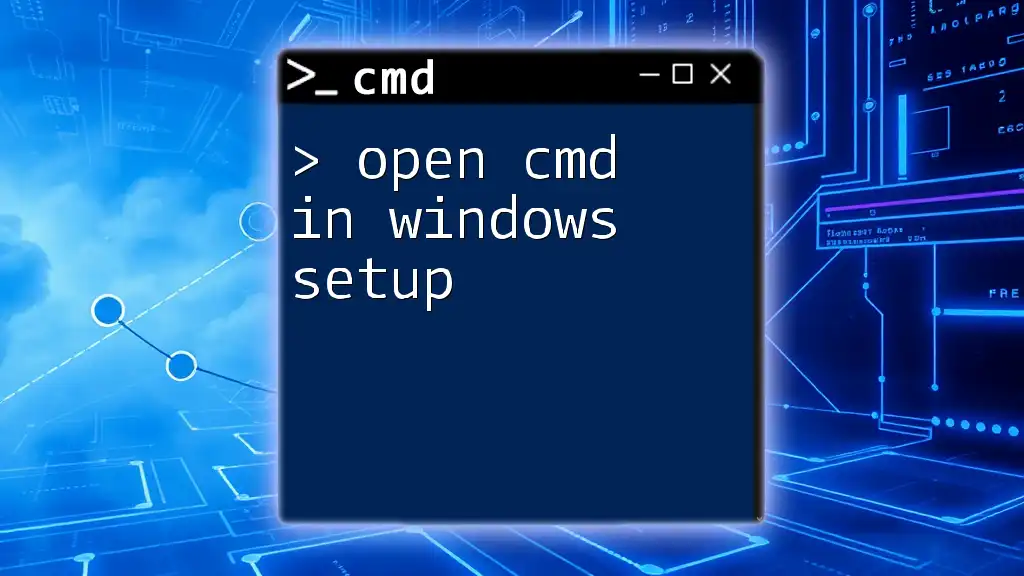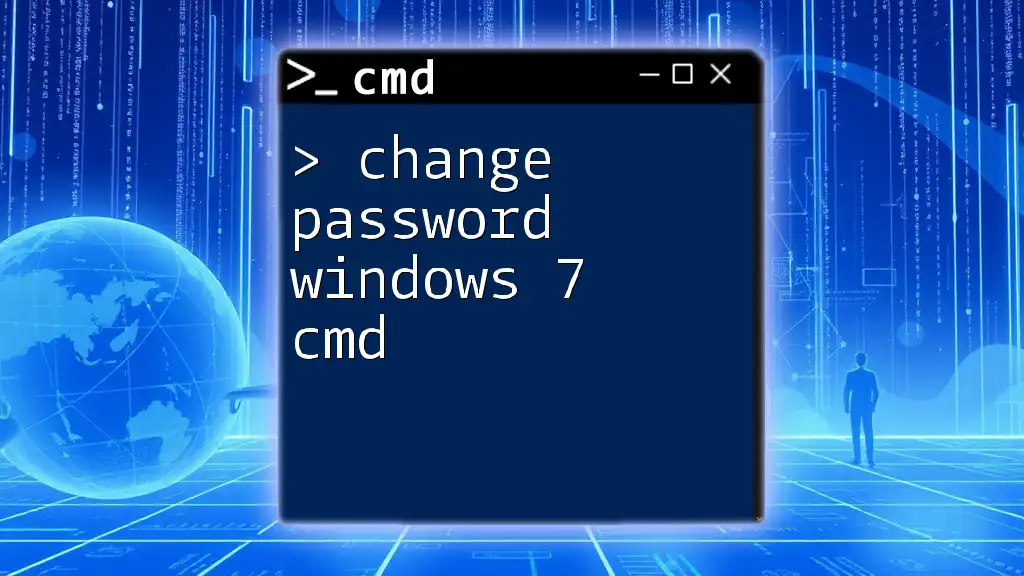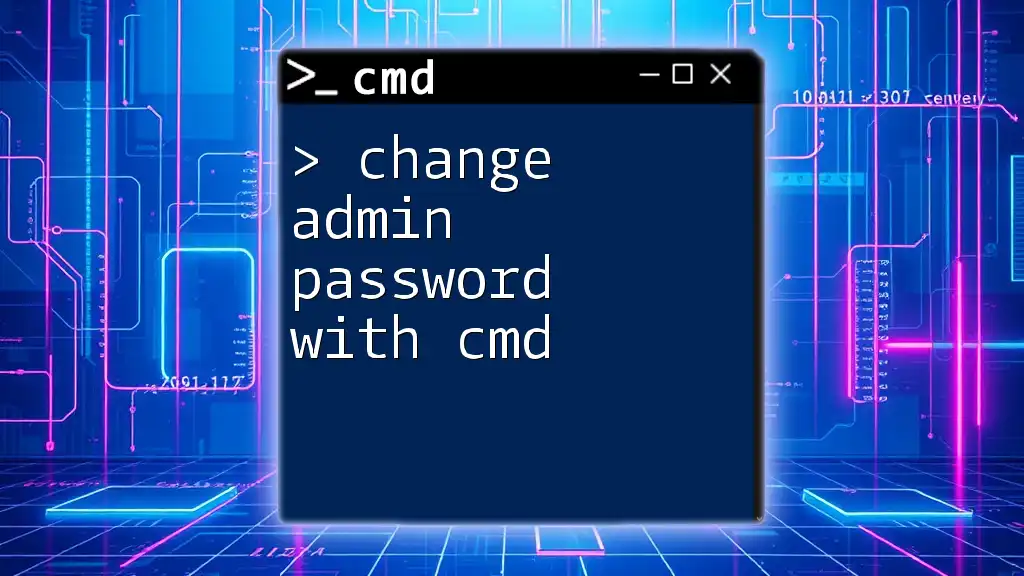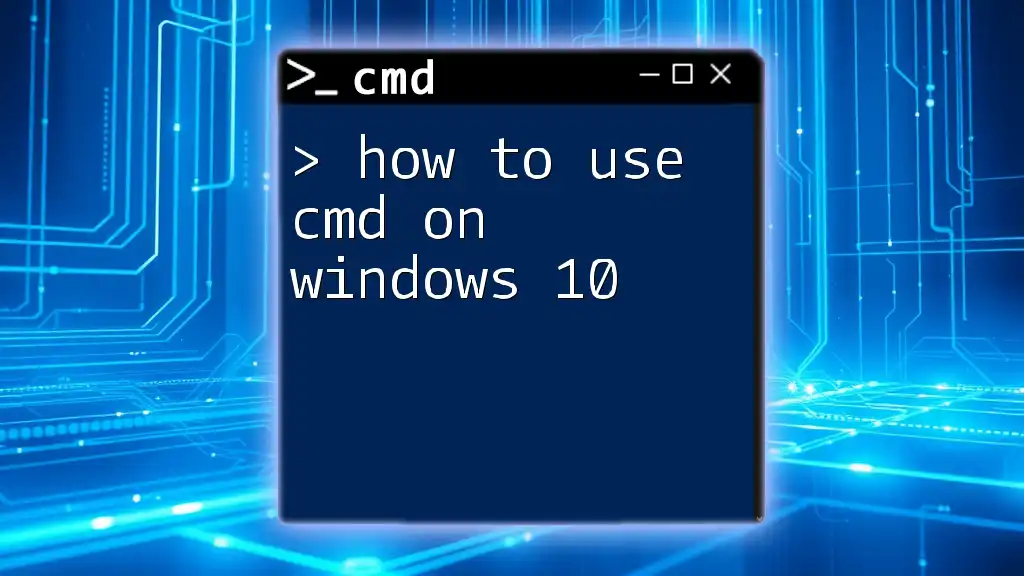If you encounter the error "cannot find bypassnro.cmd" in Windows 11, it typically means the system is unable to locate the specified script file, which you can resolve by ensuring the file is in the correct directory or providing the full path.
Here's an example of how to run a command while specifying the full path:
C:\path\to\your\script\bypassnro.cmd
Understanding `bypassnro.cmd`
What is `bypassnro.cmd`?
`bypassnro.cmd` is a command script often utilized in environments where users need to bypass certain restrictions or execute automated tasks efficiently. It acts as a bridge to execute commands and scripts that modify system settings or configurations without manual intervention. Many users rely on this script to streamline operations and simplify complex tasks.
Role of CMD in Windows 11
The Command Prompt (CMD) in Windows 11 is a powerful tool that allows users to execute commands to perform a wide range of tasks, from file operations to network configurations. Its significance lies in the ability to interact with the system at a deeper level than the standard graphical user interface provides. CMD can automate routine tasks, manage files, and even troubleshoot system issues, making it an essential utility for power users and IT professionals alike.
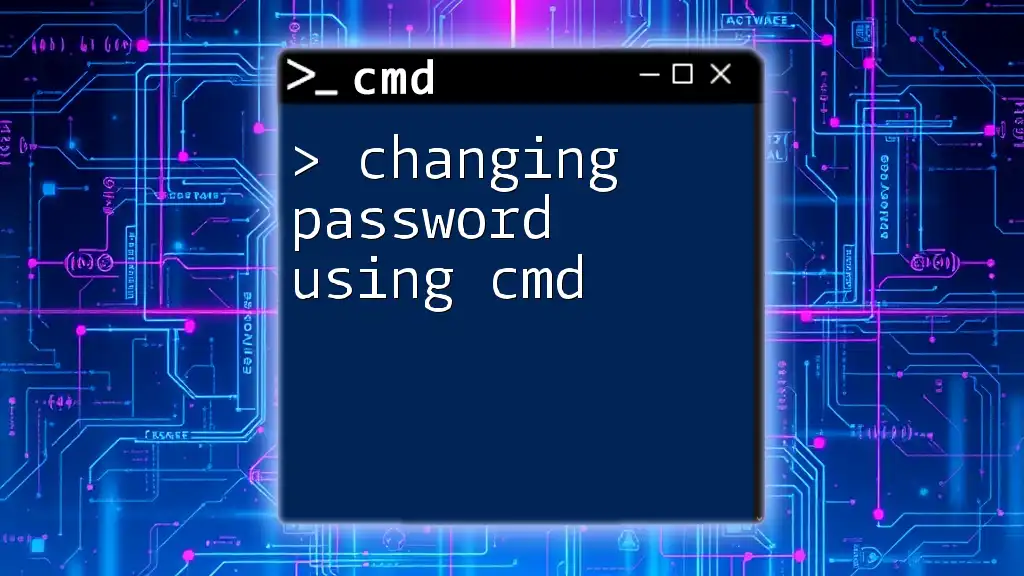
Common Reasons for "Cannot Find bypassnro.cmd"
File Location Issues
One of the most common reasons for encountering the message "cannot find bypassnro.cmd in win11" is incorrect file location. Users often expect to find this script in specific directories, such as `C:\Scripts\bypassnro.cmd`. If the file isn't located there, CMD won't be able to access it, resulting in frustration and confusion.
Permissions and Access Denied Errors
Sometimes, even if the file exists, users may face permission issues that prevent CMD from accessing it. Permissions dictate which users or processes can read, write, or execute files. If you encounter an access denied error, it's crucial to verify the file's permissions and ensure your user account has the appropriate rights.
How to Check Permissions:
- Right-click on the file.
- Select Properties.
- Navigate to the Security tab.
Typographical Errors in Command Input
It's easy to make mistakes while typing commands. Common typographical errors might include misspelling the file name or using incorrect syntax. For instance, entering a command like:
C:\> call bypassnro.cdm
will not work because of the misspelled extension. Ensure that you use the correct file name and extension to avoid such issues.
Missing or Corrupted Files
Sometimes `bypassnro.cmd` may be inadvertently deleted or become corrupted due to a system error or malware. If you suspect that the file is missing or has been altered, it's essential to verify its presence and integrity. Using tools like the Windows Search function can help establish whether the file is indeed on your system.
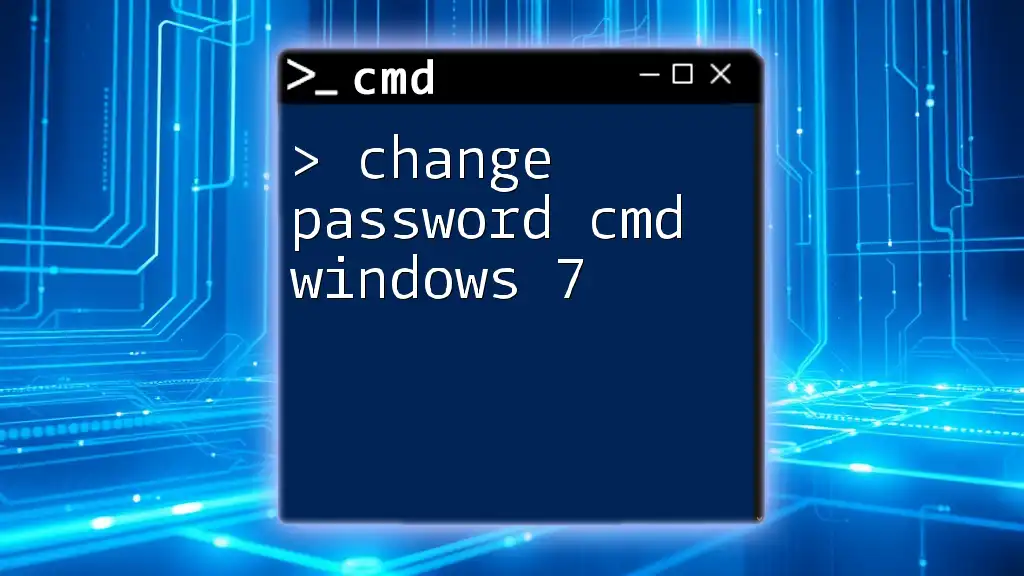
How to Locate `bypassnro.cmd` in Windows 11
Using the Search Function
Windows 11 has a robust search capability. Here's how you can quickly find `bypassnro.cmd`:
- Open the Start Menu.
- Type `File Explorer` and open it.
- Use the search bar in the top-right corner of the window and type `bypassnro.cmd`.
Alternatively, you can utilize CMD to search for the file across your file system:
C:\> dir bypassnro.cmd /s
This command instructs the system to search for the file in all subdirectories from the root of the C: drive.
Creating a New Instance of `bypassnro.cmd`
If you discover that the file is missing, you may need to create a new instance of `bypassnro.cmd`. If you have any references or versions of the script, start by compiling them into a new file.
Here's a basic template you can use to get started:
@echo off
rem This is a placeholder for bypassnro.cmd
echo Bypass script executed.
This code snippet sets up a simple command script that you can expand upon as needed. Save the file with a `.cmd` extension in the desired directory to make it accessible from command line.

Troubleshooting Steps
Running CMD as Administrator
Sometimes, running CMD as an Administrator can resolve several issues related to permissions or access. To launch CMD as an Administrator, simply:
- Search for Command Prompt in the Start Menu.
- Right-click on it and select Run as administrator.
By doing this, you increase your privileges, allowing you to bypass many of the typical restrictions that could prevent file access.
Using Alternative Command Lines
If you continue to experience issues with CMD, consider utilizing Windows PowerShell as an alternative. PowerShell often offers more powerful scripting capabilities.
Here’s how to locate the file using PowerShell:
Get-ChildItem -Path C:\ -Filter bypassnro.cmd -Recurse
This command searches the entire C: drive for `bypassnro.cmd`, providing more flexibility than CMD.
Checking System Environment Variables
Sometimes the issue may relate to your PATH environment variable not pointing to the correct directories. The PATH variable tells the system where to look for executable files. To review and edit these variables:
- Right-click on This PC and select Properties.
- Click on Advanced system settings.
- Go to the Environment Variables section.
Make sure that the relevant directories are included within your PATH to avoid future access issues.

Preventive Measures
Best Practices to Avoid "Cannot Find" Issues
To prevent encountering the "cannot find bypassnro.cmd in win11" error in the future:
- Regular file backups are crucial. Use external storage or cloud services to save your important scripts.
- Creating organized folder structures ensures that your scripts are easy to locate. A dedicated folder for scripts aids in quick access.
Documentation and Version Control
It’s beneficial to document your scripts and keep track of different versions. Tools like Git can help maintain version control, allowing you to see changes made over time and revert to previous versions when necessary.
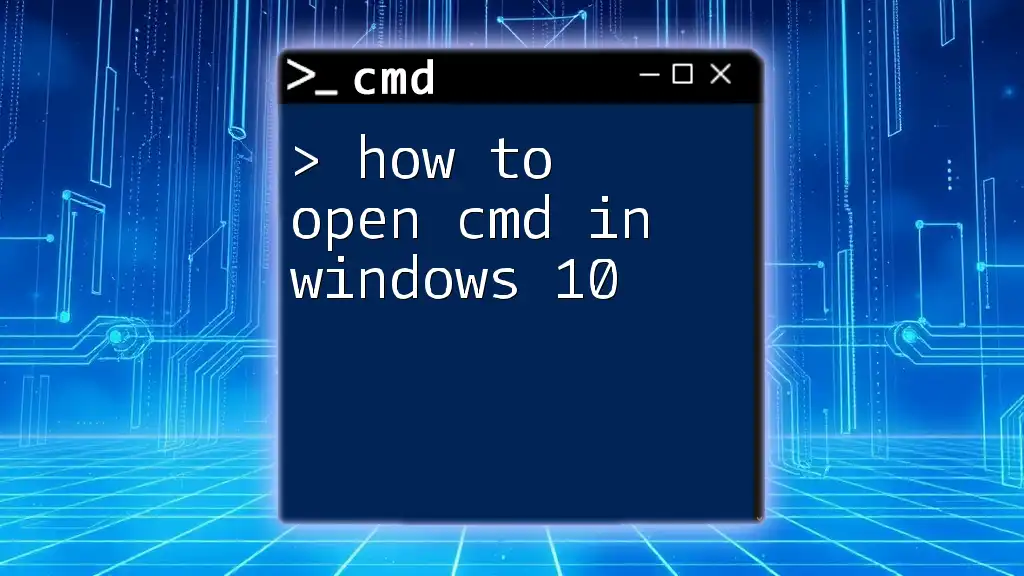
Conclusion
In summary, the error "cannot find bypassnro.cmd in win11" can arise from various issues, including file location, permissions, typographical errors, and file integrity. By understanding these factors and following the troubleshooting steps outlined, you can swiftly resolve the issue and ensure your scripts are always accessible. Always remember to practice prevention through backups and documentation to streamline your workflow in the future.
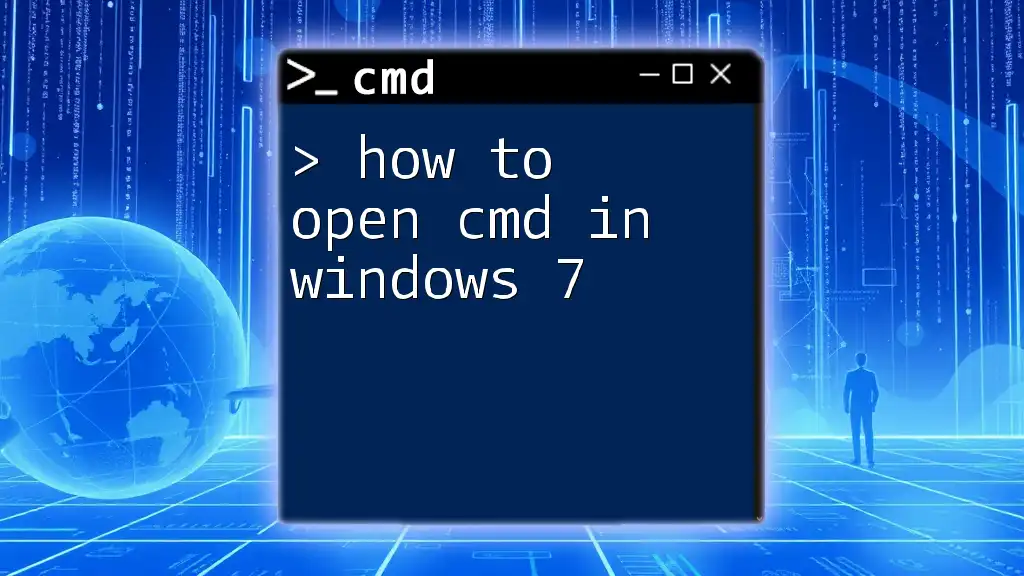
Frequently Asked Questions
What if I can't find the directory where `bypassnro.cmd` is supposed to be?
Check your search parameters and ensure you've searched all potential directories. If the file was deleted, consider restoring it from a backup.
Can I use `bypassnro.cmd` on older versions of Windows?
Yes, while it may function similarly, ensure any commands accommodated in the script are compatible with the specific Windows version you are using.
What are the risks of running unknown CMD scripts?
Running unknown scripts can expose your system to security vulnerabilities, including malware. Always review scripts for malicious commands before execution.

